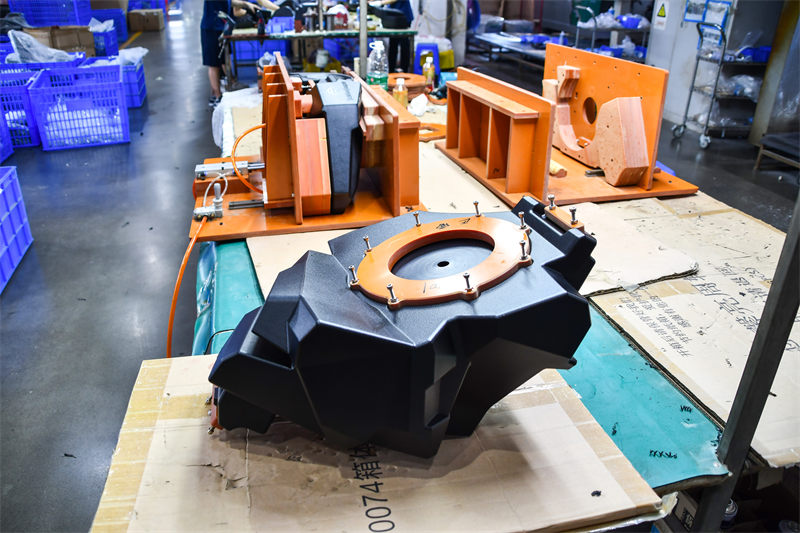Methods for Inspecting the Uniformity of Wall Thickness in Rotomolded Products
 Apr 12,2024
Apr 12,2024

Methods for Inspecting the Uniformity of Wall Thickness in Rotomolded Products
The inspection of wall thickness uniformity in rotationally molded products is a critical step in quality control. Below is a comprehensive overview of the methods used to evaluate wall thickness uniformity:

1. Visual inspection
Visual inspection is the most basic method used to assess wall thickness uniformity. It involves manually examining the product's walls using a magnifying glass or a microscope. While this method is simple and quick, it may not be reliable for detecting subtle variations in wall thickness. Furthermore, visual inspection is subjective and may vary from one inspector to another.
2. Measuring tapes and calipers
Using measuring tapes and calipers is a more precise method for assessing wall thickness uniformity. This method involves measuring the wall thickness at multiple randomly selected points across the product. The measurements are then compared to ensure consistency. This method provides quantitative data, making it more reliable than visual inspection. However, it can be time-consuming and may not provide a comprehensive assessment of the entire product.
3. Non-destructive testing (NDT) methods
Non-destructive testing methods are used to assess wall thickness uniformity without altering the product's structure. One common NDT method is ultrasound testing. Ultrasonic devices emit high-frequency sound waves that travel through the wall of the product. By measuring the time it takes for the sound waves to return, the thickness of the wall can be determined. This method is accurate and provides real-time data. However, it is suitable for flat or slightly curved surfaces and may not work well for complex geometries.
4. X-ray radiography
X-ray radiography is another NDT method used for assessing wall thickness uniformity. This method involves passing X-rays through the product and capturing the image on a computer screen. The image allows for a detailed assessment of the wall thickness distribution. X-ray radiography provides accurate and reliable results, but it is expensive and requires specialized equipment.
5. Computed Tomography (CT)
Computed Tomography, also known as CT scanning, is a more advanced NDT method used for assessing wall thickness uniformity. CT scanning involves rotating the product around an X-ray source and capturing multiple X-ray images from different angles. A computer algorithm then reconstructs the 3D image of the product, allowing for a detailed assessment of the wall thickness distribution. CT scanning provides highly accurate and detailed results, making it suitable for complex geometries. However, it is expensive, time-consuming, and requires specialized equipment.
6. Simulation and modeling
Simulation and modeling are computational methods used to predict and evaluate wall thickness uniformity during the design phase. These methods involve creating a 3D model of the product and simulating the roto molding process. By adjusting process parameters and analyzing the simulation results, designers can optimize the wall thickness distribution. Simulation and modeling provide valuable insights and can help reduce the need for expensive and time-consuming physical testing.
Assessing wall thickness uniformity in rotomolded products is crucial for ensuring structural integrity, functionality, and aesthetic appeal. The choice of method depends on factors such as the product's complexity, the required level of accuracy, and available resources.
 Tel: 0086-13632687993
Tel: 0086-13632687993  Email: roto@lightvenus.com
Email: roto@lightvenus.com

 Home
Home How to Judge Density Precision in the Rotational Molding Process
How to Judge Density Precision in the Rotational Molding Process  You May Also Like
You May Also Like



 Tel
Tel
 Email
Email
 Address
Address








